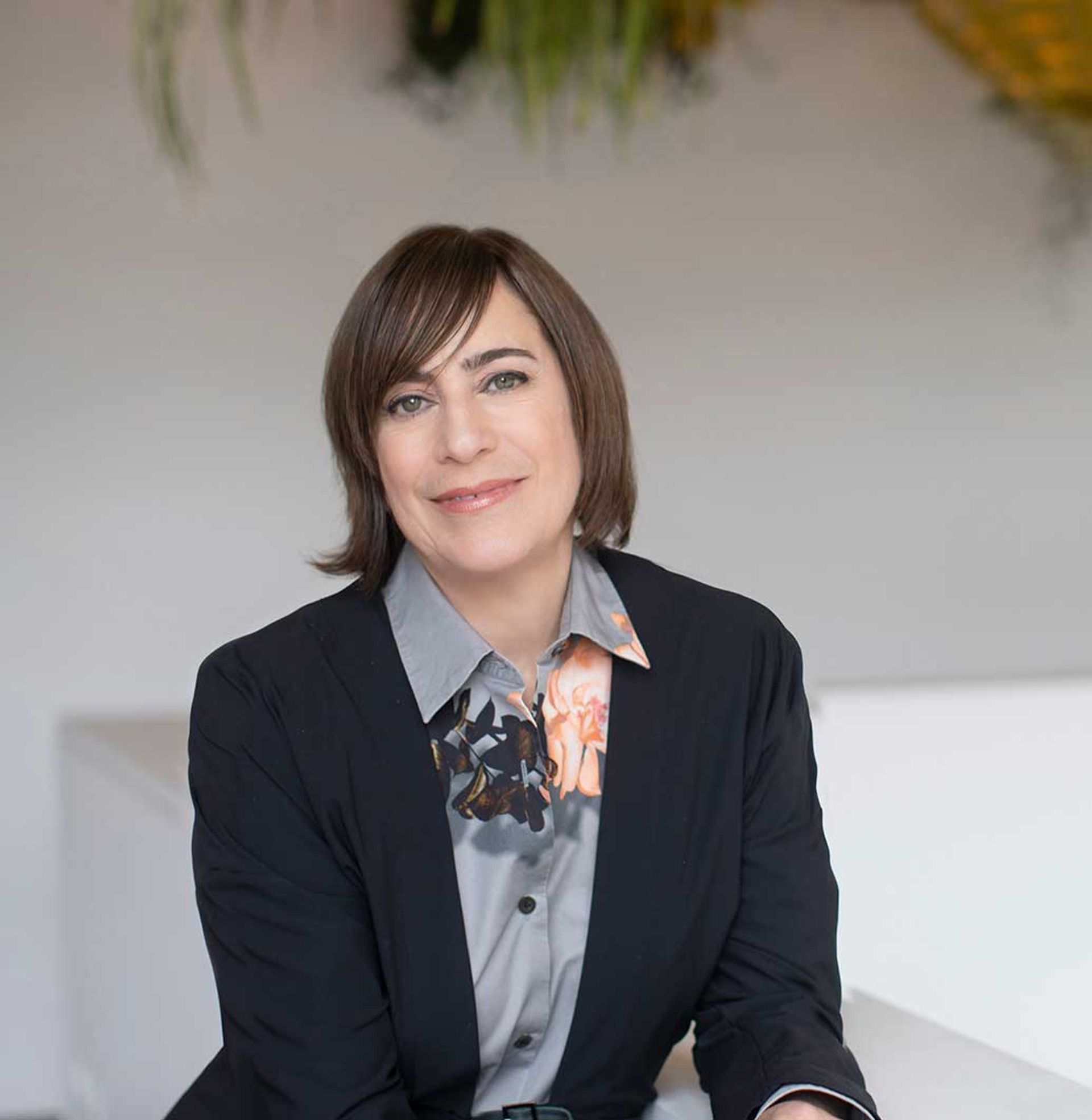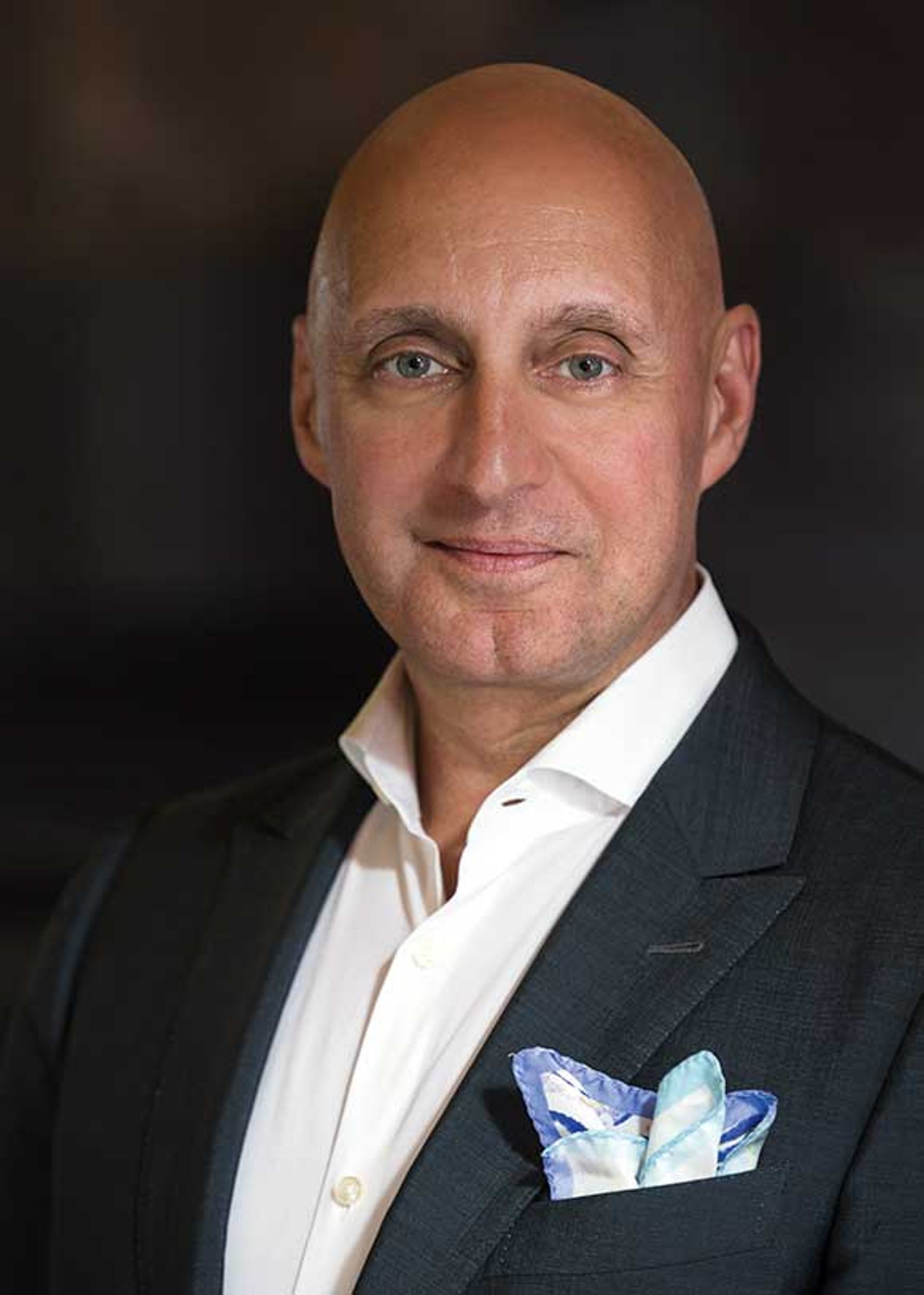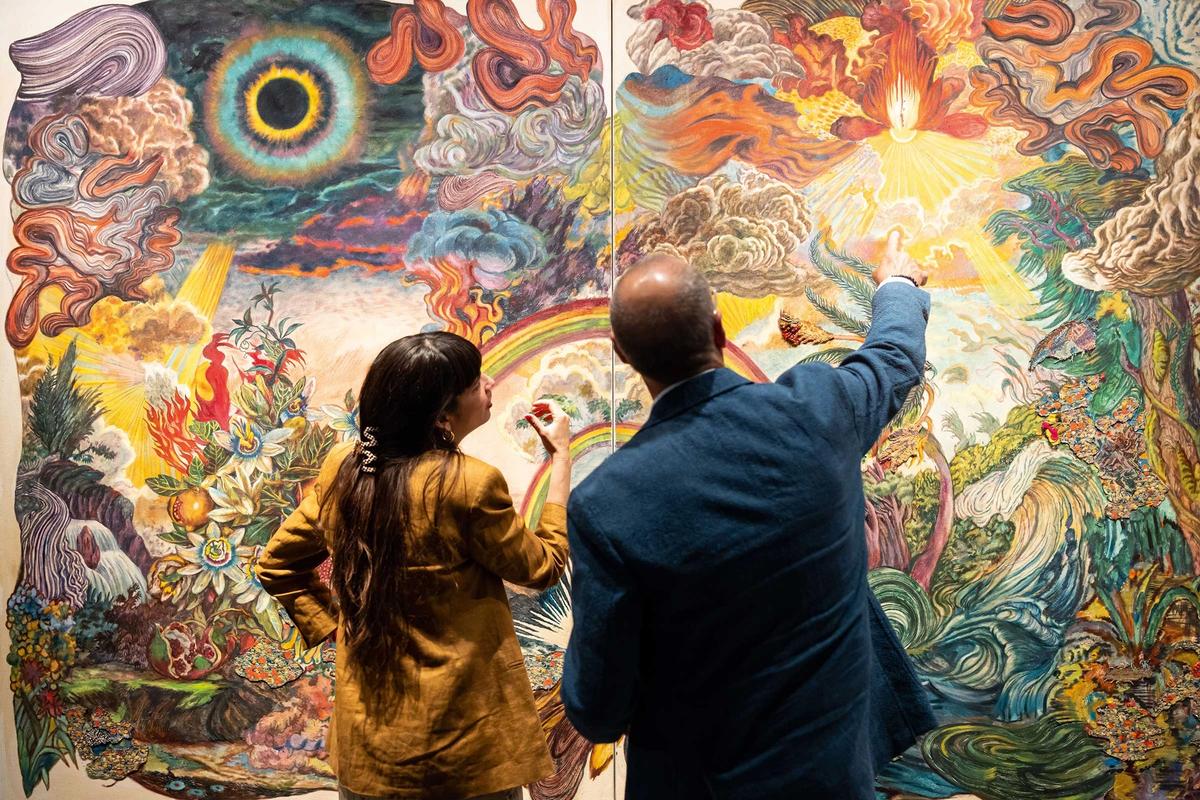Expo Chicago and the Museum of Contemporary Art (MCA) are pillars of Chicago’s art scene, and over the years they have become close collaborators—year-round and especially in April, during the run of the fair. For the past 11 years, ticket sales for Expo Chicago’s opening night have benefited the MCA’s education programmes. The museum’s curators are often involved in the fair’s talks, curatorial initiatives and other special events.
Each year, on the morning of the fair’s closing day, “every dealer is invited for a big fat breakfast at the museum and private access to all the shows, because we know they can’t get away during work hours”, says the MCA’s director, Madeleine Grynsztejn.
“It is definitely not just a bagel, a doughnut and some juice,” says Expo Chicago’s president and director, Tony Karman. “It really reflects the support, commitment and respect that the institution has for the galleries and the collectors that are coming in.”
We spoke with Grynsztejn and Karman about what the fair means for Chicago’s art scene.
The Art Newspaper: For an unfamiliar visitor coming to Expo Chicago for the first time ever, or in many years, how would you characterise the city’s contemporary art ecosystem?
Madeleine Grynsztejn: This truly is the most meritocratic city in the country, in that if you come in with a great idea and if you want to work hard, everybody will give you the room in the world to uplift and succeed. The reason why this ecosystem is so healthy is because it lives for and is largely attributable to the supportive environment for artists. This is a place where artists can afford studios. This is a place that contains 20 universities and colleges, some of them world-renowned—the University of Chicago, Northwestern, the School of the Art Institute—where artists train, and then they can live.
A thriving ecosystem that is centred on artists is like a table; it needs four legs. One of them is the schools. One of them is places to exhibit like museums and galleries. One of them is collectors. And Expo Chicago is a part of that. All of those things are in place to create a thriving ecosystem here. But the ecosystem, to be good, must be centred on artists. You know cities that are not centred on artists, you know what they look like when they’re centred on commercial galleries or collectors—they don’t work.

MCA’s director, Madeleine Grynsztejn
Courtesy Museum of Contemporary Art Chicago
“It’s immigrants from all over the world that continue to shape the artistic culture of Chicago
Tony Karman: Our gallery scene is robust, but if you just look at the numbers it may not necessarily compete with some of the other major cities. But the galleries here are all committed to showcasing Chicago talent. If you look at the galleries in Chicago that are doing international art fairs, of course they have an international programme and represent artists from other parts of the world, but all have a piece of Chicago with them. That is a commitment to this community that continues to pay dividends not just for the artists but for the entire ecosystem and community.
How does Expo Chicago support the work that is happening at the MCA, and vice versa?
Grynsztejn: We have created very deliberately a thread during the art fair, when our curators are present on panels and proactively in the galleries, as educators and navigators alongside our donor community and collecting community. Both Tony and Expo Chicago and the MCA behave on a simultaneously hyper-local and international stage. And for 11 years we have had this beautiful relationship where the opening night is a benefit and all dollars go to education, learning, public programming and community outreach at the MCA.
Karman: We have strong relationships with all the city’s institutions, whether it’s the Art Institute of Chicago or the Smart Museum, of course, but there is a unique bond between the MCA and Expo Chicago, as it relates to the vernissage and integrated programming in every way. Their curators are seminal to our success, and activating the collectors and trustees of the MCA in support of the fair is deeply important for both of us because both benefit from not just collaboration, but year-round partnership.

Expo Chicago’s president and director, Tony Karman
Photo: Paul Audia. All Rights Reserved 2015. www.audia.net
To what extent is the fair about drawing out-of-town collectors to Chicago as opposed to nurturing a local community of collectors?
Grynsztejn: Among the many, many things that Expo does that eventually benefit the city of Chicago and the museum in a permanent way is that it offers an arena to educate a large community of collectors here in Chicago.
The MCA, like any museum, has limited funds to compete in an ever-more expensive market, so our curators and I work very intentionally with our trustees, collection committee, exhibition committee and donor collector committee to align on our aspirations for our respective collections. So that the plan is, for instance, “Listen, I’ll buy the Nicole Eisenman, will you buy the Dana Schutz?” And that way, eventually, when you promise or give it outright to the MCA, everybody is happy. So Expo Chicago is this amazing platform that on an annual basis we can use as a training ground for a kind of practicum: how to collect, what to collect, when to collect and why to collect.
Karman: A solid fair means that the world comes every year and, as we work together, introduces individuals who not just learn what collecting may be or what it means to buy a piece of art, but also feeds into the opportunity for the museum to build trustees and other relationships with these individuals. It’s an important part of the system.
Madeleine and I can speak fondly, with love and reverence, for a generation of collectors that built her institution and were seminal attendees of the fair every year. Many of those individuals have either passed on or are passing the baton to a new generation. They are here. We benefit from the museum scouting and engaging with those individuals. And the museum benefits from those individuals being guided through what it means to collect and the international art world that’s in their backyard for four days.
Both of you run organisations that are at once conversing with a global art audience and serving communities in your region, your city and your neighbourhoods. How are you balancing those priorities now and going forward?
Grynsztejn: I would say two things broadly. Since 2020, our biggest learning has been that our insides need to be as ethical and have as much integrity as the messages that we convey through the art on the walls and onstage. And any difference, any delta, between those two is a credibility gap. So the future will be as much about how ethical and sustainable our sense of social belonging is behind the scenes as in front. And then, secondarily, we want to change and continue to evolve how people meet art and how we bridge differences of opinion and perspective through the lens of art and culture.
Karman: I was listening to our In Situ curator Amara Antilla—who’s independent now but had organised what was called The Regional out of Cincinnati a few years ago—and both she and Rosario Güiraldes from the Walker Art Center were here in January, and a lot of the conversations went to “What did it mean when you did The Regional?” or “What does it mean to be regional?” It makes you aware that there is not a typical Midwestern artist, there’s no thematic that one could look at. There aren’t artists painting whatever the perception of the Midwest would be.
We’re all immigrants to these communities. What both of them really spoke to was the fact that it’s this wonderful, rich stewpot—in Minneapolis, Chicago, Cincinnati, St Louis and all those cities—there isn’t a regional perspective. It’s immigrants from all over the world that continue to shape the artistic culture of Chicago. Yet something persists and this is what Madeleine led with—this genuine niceness and willingness to collaborate and be supportive. And it’s not as if you’ve travelled from Mexico, you’re now here in Chicago and you have to read the tutorial on how to be a Midwesterner. But something is transferred in a way, and it’s a beautiful thing.


